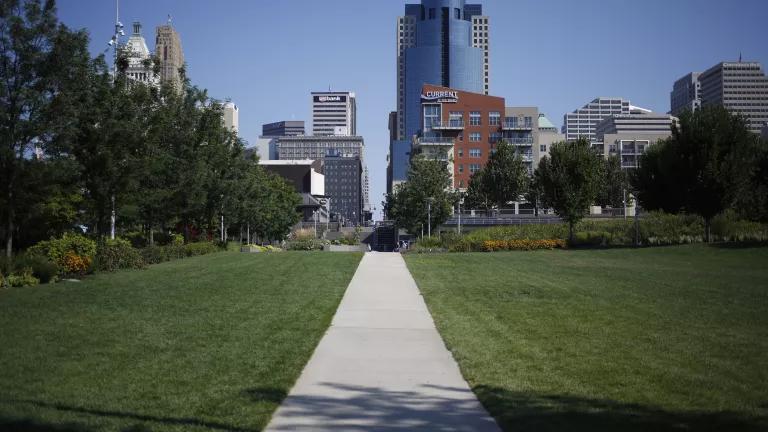Cincinnati Empowers Building Owners to Go Green

While some cities focus on combating only one aspect of climate change, Cincinnati is tackling it with a multipronged approach as part of its Green Cincinnati Plan to achieve 100 percent renewable energy and reduce carbon emissions by 2035. Last year, Hamilton County successfully passed Issue 7, which will improve and promote cleaner transit and the City launched the largest municipal solar project in the country. In 2021 Cincinnati is moving right along from transit and renewable energy to its next goal of achieving equitable energy access in residential buildings through a new small-grants initiative to encourage building owners to make energy-efficient upgrades to multifamily buildings, specifically those with low-income tenants.
At the time it was created, most energy efficiency programs targeted owners of single-family homes, leaving a substantial gap of residential, multifamily structures that also contribute to a city’s energy waste and emissions. Basic energy efficiency upgrades to individual units, such as LED light bulbs and weatherization of drafty windows, can result in a nearly 15 percent cost savings for renters, while building improvements, like HVAC systems, can achieve a whopping 30 to 50 percent in cost savings for building owners. Taken together, these actions have the potential to significantly lower carbon emissions, vastly improve a city’s overall energy efficiency and reduce energy burden for those most vulnerable.
In November 2020, in partnership with Duke Energy Ohio, Cincinnati launched a new grant program that incentivizes multi-family building owners to make efficiency capital upgrades in order to achieve deeper energy savings, reduce tenant energy burden, and, resolve the split incentive phenomenon that makes it challenging to implement energy-saving measures in multifamily buildings.
With the first round of small grants, ten buildings were selected for capital upgrades across seven Cincinnati neighborhoods.
The program matches owners’ investment in energy efficiency capital improvements dollar for dollar, up to $5,000. Upgrades must directly reduce electricity bills—not natural gas usage—and result in verifiable energy savings for low income tenants. Eligible expenditures include wall, window, or other infrastructure insulation; recycling and replacement of old appliances with Energy Star–certified models; LED lighting; central air conditioning; and efficient water-flow fixtures, among others.
The grant program is part of a suite of energy equity programs that aims to meaningfully address energy waste and energy burden for low-income residents, an historically difficult sector to reach. Grant recipients are required to have tenants who live 200 percent below the federal poverty limit. Recipients must also pledge to maintain pre-award rent levels and the same percentage of low-income tenants in the building for at least two years following the award. Moreover, preferred buildings are those located in Cincinnati’s energy burden neighborhoods where the tenant energy burden is 6 percent or higher, twice the national average. Applicants can be either nonprofit, such as existing affordable housing, or for-profit corporations, such as developments that maintain a certain portion of affordable housing stock.
The matching grants program was conceived as an annual one, with the first round of grant awards announced on December 18, but Cincinnati’s Office of Environment and Sustainability has approved a second round for funding in spring 2021. An additional flagship capital improvements program, focusing on energy audits and whole building energy improvements is slated to launch in February. To directly reach residents, a complimentary program pairs tenants with education on reducing energy use as well as direct bill assistance.
Cincinnati is one of 25 cities selected to participate in the Bloomberg Philanthropies American Cities Climate Challenge, which empowers cities to take strong action in reducing the pollution that contributes to climate change and impacts public health. Implementing this small-grants program is one of the exciting initiatives the Climate Challenge was able to help support.



